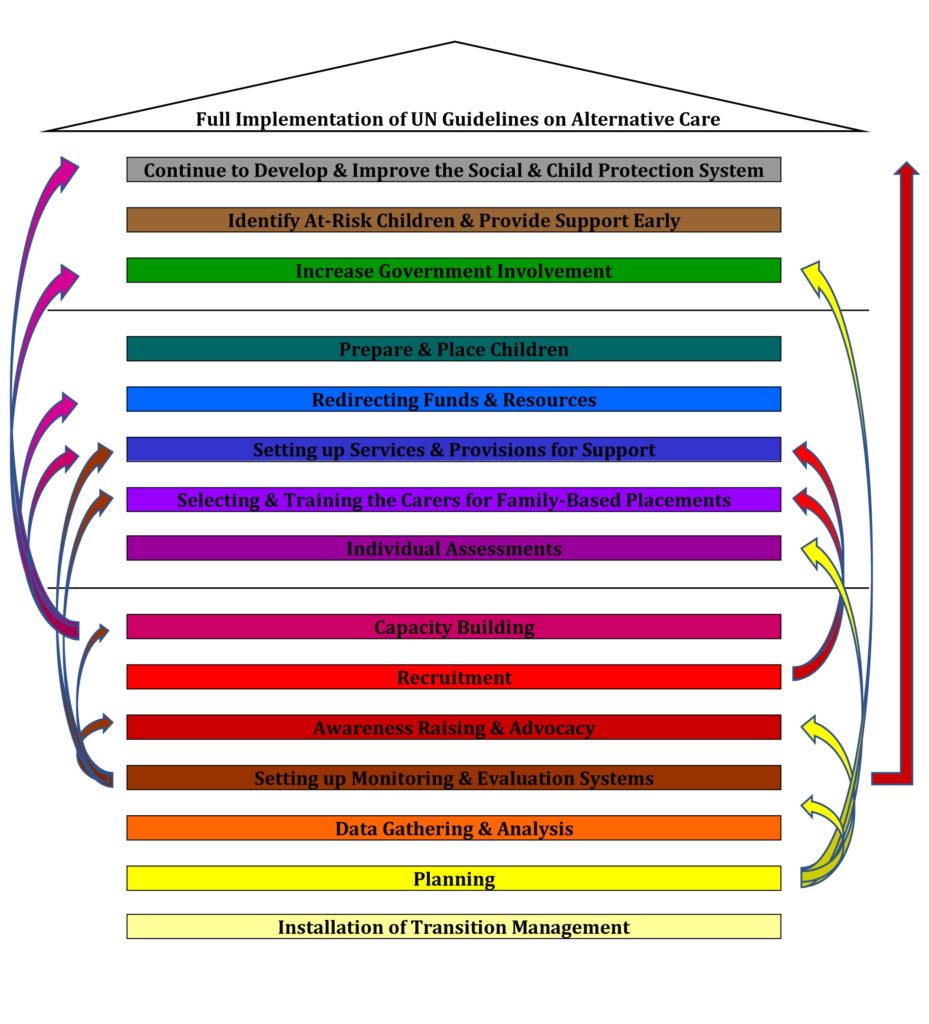Part 14 of the explanation with the ToC: When an institution is to be closed, there tends to be a lot of resistance on many accounts, one of them being the ‘loss’ or ‘waste’ of the resources available to the institution. Generally, a residential childcare institution will have a building, possibly with land, furnishings of all kinds, supply stores and possibly vehicles. It will also have a funding stream to cover its costs and staff to run the place and take care of the children. Staff tends to be extremely worried about losing their jobs, in addition to other misgivings.
However, there is no need to waste any of this or to leave it behind. Generally speaking, most of the assets and resources – both human and otherwise – can be repurposed, and used as part of the new alternative care system or as part of one of the services that are being developed.
Depending on the location and the size, the building can be used as the offices from which the new alternative care system is run, or it can be used to start a school, to provide daycare or any number of things. Furniture and supplies can be used to provide children in foster homes and other community-based care placements with beds, tables, chairs, etc. Vehicles can be used by the social workers to visit families, for assessments, monitoring and support visits.
Money that was used to fund the institution, can be used to fund the new alternative care system and the services that support it. As mentioned in the awareness-raising stage, it may be necessary to raise awareness with donors providing money to the institution, to convince them to continue supporting the children, in ways that are more beneficial to them. Plus, in ways that allow more children to be reached for the same amount of money. The budget currently used to provide the children with care should be earmarked to continue to be used for the care of vulnerable children. So instead of seeing the decline of children in the institution as a way to save money, while on the other end there is a struggle to secure funds for family-based care and community services, the money should transition from one care system to the next, just like the children do.
Staff too can often be given new jobs after the transition. An assessment needs to be done, of course, people should not be given jobs blindly. If there is knowledge of someone having been abusive or otherwise harmful towards the children, that person should not be allowed to work with children anymore. However, the majority of staff tends to have the children’s well-being at heart. They will generally require training and some support – falling under capacity building – to prepare for their new functions, but given that they can do very well. Caregivers in the institution may be interested to be retrained as foster carers, or as caregivers of small group homes if these are being set up. Psychologists and social workers employed by the institution can be valuable additions to the alternative care team, and so on.
As part of the planning and design of services, take into account the resources that can be redirected into the new system and how best to do this. When it comes to planning, it is very important to think carefully about the timing of the redirection of various resources. For example, most people would find it obvious that you cannot move beds to new locations before children are being moved, because that would leave children without a bed. Somehow fewer people seem to make the connection that you cannot retrain caregivers to become foster parents and then have them become the first foster carers to take two children each into their home. This situation would ensure that the first handful of children would arrive in homes with familiar carers straight away, which is great, but it would also mean that the other 10-20 children for whom the caregiver was responsible are left in their dorm without anyone to look after them.
So, while staff from the institution should be used wherever possible to support the new services and systems, it is essential to keep in mind that you cannot afford to move staff to new positions until a significant part of the children have already moved out of the institution and redundancy of staff is starting to emerge.

If you would like to read the explanation with the model from the very start, you can go HERE.
Please share this blog to help spread awareness.

